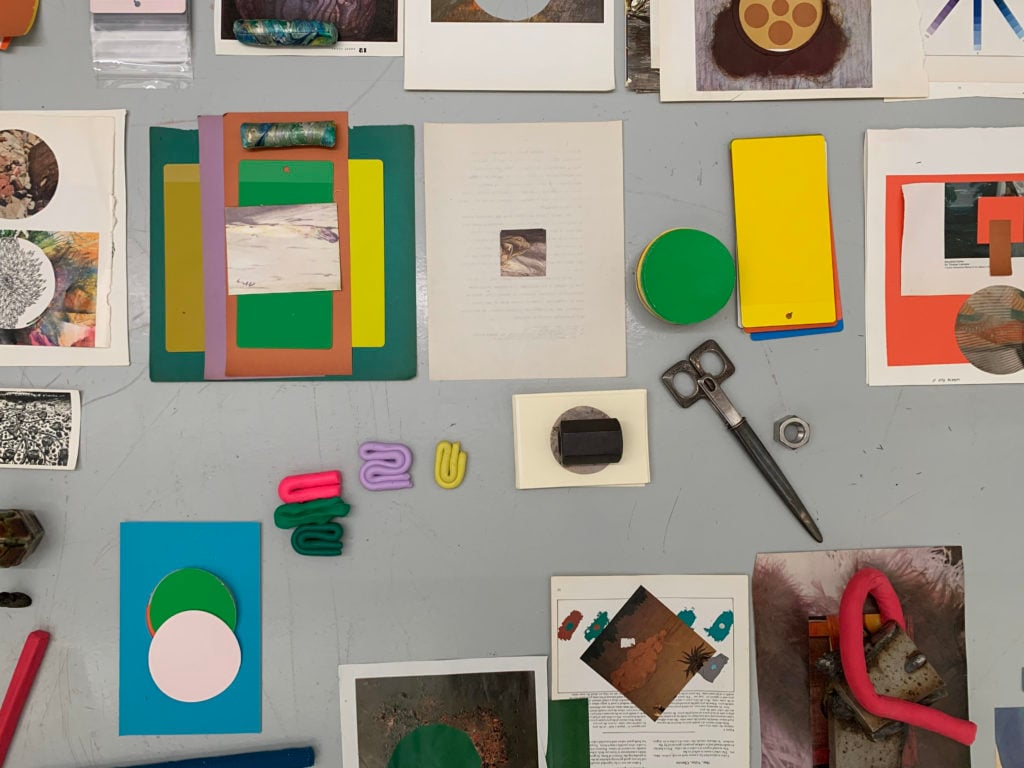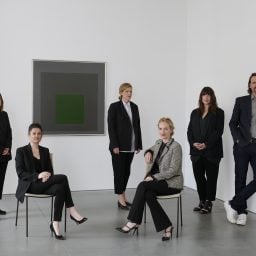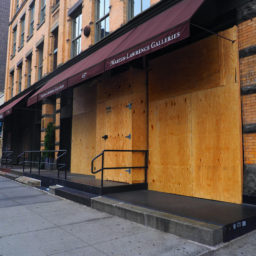For years, David Zwirner Gallery has been a regular at more than 20 art fairs around the globe—that is, until the current global health situation put these events, and nearly everything else in the art world, on lockdown. Now, the gallery is developing a new program to promote artworks that it might otherwise show at fairs on its own website.
As part of its ongoing efforts to beef up its digital offerings, the gallery is rolling out two initiatives in the middle of April. The first, called “Studio,” will showcase a rotating presentation of one to three brand-new works by artists the gallery represents, beginning with a photograph that Wolfgang Tillmans created specifically for the project.
The second initiative, “Exceptional Works,” focuses on the secondary market. Designed to present one major work at a time, it will kick off with a Josef Albers “Homage to the Square” painting from 1959, consigned from the collection of Theodore and Barbara Dreier, the founders of the legendary Black Mountain College, where Albers taught. The work will be priced between $1 million to $2 million.
“I see this as a moment to change people’s thinking about the online space,” Zwirner told Artnet News.

Wolfgang Tillmans. Photo by Carmen Brunner. © Wolfgang Tillmans.
Unlike “Studio,” which will be accessible to anyone who agrees to submit their email address, “Exceptional Works” will exclusively be available to existing gallery clients on an invitation-only basis. Prices will also only be relayed upon request, although Zwirner suggests that the sweet spot for blue-chip art sales online is in that $1 million-to-$2 million range.
Both initiatives in large part aim to make up for the fact that the lockdown era has interrupted a critical part of the art-market supply chain. Under normal circumstances, one-off or small groups of works that do not comprise a full exhibition would be showcased at an art fair. And even though the art industry’s traveling circus has been put on pause, artists are still creating work—in fact, some more than ever, as they are cloistered at home and in their studios—and consignors are still looking for places to sell high-priced works (particularly since most of the major auction houses have delayed their marquee spring sales to June).
At a moment when money is not exactly rolling in, as Zwirner acknowledged (his exact words were that the market was being “very selective”), it might seem counterintuitive to create a digital destination and ask clients to come to you, rather than reaching out to them individually and conducting business the old-fashioned way. But Zwirner said the new digital offerings aim precisely to address the fact that not everyone is in a buying mood right now.
“Personalized outreach is hard—some aren’t in an art-buying mode, some don’t want to talk to you,” he said. On the other hand, for those who are interested, an online venue like this one can create the same sense of urgency that an art fair does. “They know they aren’t the only one looking,” Zwirner explained. “They feel a sense of competition.”
Zwirner isn’t the only gallery trying out new approaches to the online space in this uncertain moment—although it is one of the few that can afford to unroll this many glossy new initiatives at once. This week, Gagosian—which initially piloted the one-work-only viewing-room concept with an Albert Oehlen painting last year—announced a new weekly series called “Artist Spotlight,” which will highlight work by an artist alongside interviews, film recommendations, and other supplemental content. The effort will begin with a new assemblage by Sarah Sze, who was due to be the subject of an exhibition at Gagosian’s Paris gallery last month.

Photos from Carol Bove’s studio, 2020 © Carol Bove. Courtesy the artist and David Zwirner
If these efforts are successful, they may have an enduring impact on the art-market landscape. While Zwirner said he does not anticipate ever pulling away from brick-and-mortar gallery spaces, he does expect that he and his peers might lessen their art-fair participation in the future.
“It’s hard for me to imagine that the attraction that an art fair has for me right now is going to be the same when I have an online business that does a really good job bringing new clients to the gallery,” he said. Now that he is meeting more new clients though the website than through art fairs, and now that collectors seem to be willing to pay a higher price point online, “I think the art fair world will probably slim down.” He noted that the marquee fairs—the Friezes and the Basels—will likely proceed unharmed, but “I’d be a little nervous on the periphery,” he said.
The gallery currently has a total of 12 people in its online sales and tech departments, four of whom have been hired this year. In recent weeks, Zwirner added, he has issued an “open call in-house” for those employees whose work has been limited by the closure of its physical spaces “to help with online projects.”
Future editions of “Studio” will feature new work by Carol Bove, R. Crumb, and Liu Ye, while “Exceptional Works” will showcase a looped-wire hanging sculpture by Ruth Asawa and a Giorgio Morandi still life.











